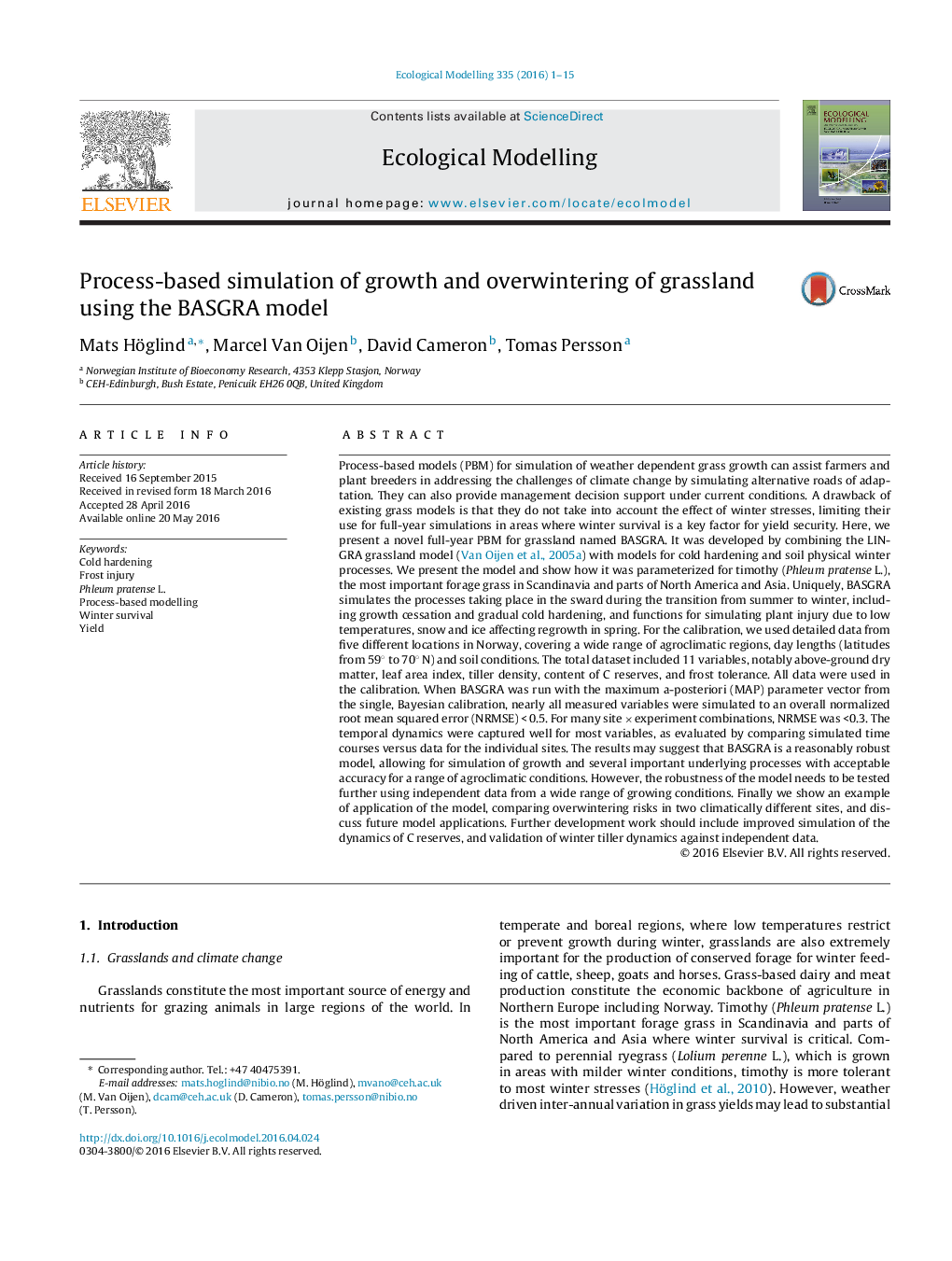| کد مقاله | کد نشریه | سال انتشار | مقاله انگلیسی | نسخه تمام متن |
|---|---|---|---|---|
| 4375534 | 1617412 | 2016 | 15 صفحه PDF | دانلود رایگان |

Process-based models (PBM) for simulation of weather dependent grass growth can assist farmers and plant breeders in addressing the challenges of climate change by simulating alternative roads of adaptation. They can also provide management decision support under current conditions. A drawback of existing grass models is that they do not take into account the effect of winter stresses, limiting their use for full-year simulations in areas where winter survival is a key factor for yield security. Here, we present a novel full-year PBM for grassland named BASGRA. It was developed by combining the LINGRA grassland model (Van Oijen et al., 2005a) with models for cold hardening and soil physical winter processes. We present the model and show how it was parameterized for timothy (Phleum pratense L.), the most important forage grass in Scandinavia and parts of North America and Asia. Uniquely, BASGRA simulates the processes taking place in the sward during the transition from summer to winter, including growth cessation and gradual cold hardening, and functions for simulating plant injury due to low temperatures, snow and ice affecting regrowth in spring. For the calibration, we used detailed data from five different locations in Norway, covering a wide range of agroclimatic regions, day lengths (latitudes from 59° to 70° N) and soil conditions. The total dataset included 11 variables, notably above-ground dry matter, leaf area index, tiller density, content of C reserves, and frost tolerance. All data were used in the calibration. When BASGRA was run with the maximum a-posteriori (MAP) parameter vector from the single, Bayesian calibration, nearly all measured variables were simulated to an overall normalized root mean squared error (NRMSE) < 0.5. For many site × experiment combinations, NRMSE was <0.3. The temporal dynamics were captured well for most variables, as evaluated by comparing simulated time courses versus data for the individual sites. The results may suggest that BASGRA is a reasonably robust model, allowing for simulation of growth and several important underlying processes with acceptable accuracy for a range of agroclimatic conditions. However, the robustness of the model needs to be tested further using independent data from a wide range of growing conditions. Finally we show an example of application of the model, comparing overwintering risks in two climatically different sites, and discuss future model applications. Further development work should include improved simulation of the dynamics of C reserves, and validation of winter tiller dynamics against independent data.
Journal: Ecological Modelling - Volume 335, 10 September 2016, Pages 1–15